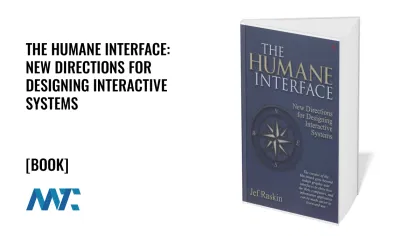
We spend our days navigating CRM dashboards, composing emails, tracking metrics, or building campaigns. The Humane Interface will feel less like a treatise on user interface design and more like a mirror to your daily frustrations. Jef Raskin—best known as the father of the Macintosh project at Apple—delivers a sharp, sometimes bristling critique of how software is built and why it so often gets in the way of what users are actually trying to do.
I just finished the book, and I’ll say this: it doesn’t read like a conventional UX design manual. It’s more of a manifesto—a rallying cry to make computers serve humans rather than the other way around. And as someone working in the digital marketing space, where we rely on dozens of tools daily (and complain about most of them), I found it refreshingly blunt and deeply relevant.
A System Built for Humans, Not Developers
Raskin’s central argument is that most interfaces are inhumane—they require users to think like computers instead of designing computers to think like humans. He introduces the idea of the “cognitive friction” we face when trying to accomplish simple tasks in over-engineered systems. For digital marketers juggling SEO tools, analytics dashboards, and campaign managers, this hits home. Why does exporting a simple list of leads take six clicks? Why can’t we undo a mistaken segmentation rule in a CRM?
His idea of modelessness—removing interface states that change behavior based on unseen contexts—feels prophetic. If you’ve ever edited a form, switched tabs, and lost all your input because of some invisible autosave failure or state reset, you know exactly what he’s talking about. This is not abstract theory. It’s every SaaS platform you’ve cursed at this week.
Design for Flow, Not Control
What’s particularly resonant for those of us in sales and marketing is Raskin’s discussion of flow—the state of being completely absorbed in a task without distraction. He criticizes systems that interrupt that flow with alerts, confirmations, and arbitrary constraints. Think about how often your work is derailed by clumsy UX: a login timeout, a modal popup warning you that your session will expire, or a menu that hides the feature you need three layers deep.
Raskin’s call is to build systems that anticipate what users are trying to accomplish and reduce friction at every turn. For marketing and sales professionals who work in fast-paced, goal-oriented environments, this is more than good design—it’s good business.
The Zooming User Interface: Revolutionary or Rigid?
Raskin proposes a bold solution to interface clutter: the Zooming User Interface, where everything resides in one infinitely zoomable space. At the time, this seemed radical, and he pitches it with conviction. As a marketer, I can’t help but wonder what it would be like to organize campaigns, client records, and performance metrics spatially—zooming into a campaign asset, then out to see the whole funnel. While today’s software hasn’t fully embraced this vision, you can see echoes of it in tools like Prezi, Miro, and Notion.
That said, not every idea feels applicable without major shifts in user behavior or platform architecture. His disdain for the mouse and praise of keyboard-centric navigation feels slightly dated (even for 2000), especially for visual professionals. Still, it’s hard not to admire his insistence on radical rethinking rather than incremental improvement.
A Call to Marketers: Demand Better Tools
If you’re in marketing or sales, The Humane Interface gives you language and principles to articulate what you’ve always felt: many of your tools are poorly designed for the way you actually work. You don’t need to be a developer to understand the value of consistency, predictability, and reversible actions. You need to recognize the cost of friction—and then advocate for software that respects your time and mental energy.
More importantly, if you’re involved in selecting or even helping shape the tools your team uses—through feedback, procurement, or customization—this book empowers you to ask better questions. It nudges you to demand humane software: interfaces that support your goals rather than obstruct them.
Final Thoughts
Jef Raskin’s The Humane Interface is not light reading, but it is essential reading—especially at a time when the web is becoming more crowded, more interactive, and more central to our sales and marketing lives. It may have been written with designers and engineers in mind, but its message is loud and clear for the rest of us: technology should make work feel effortless, not exhausting.
If you’ve ever shouted at your screen while trying to build a campaign or find a simple report, you owe it to yourself to read this. Raskin won’t fix your tools, but he’ll give you the ammunition to demand better ones.
Buy The Humane Interface: New Directions for Designing Interactive Systems on Amazon